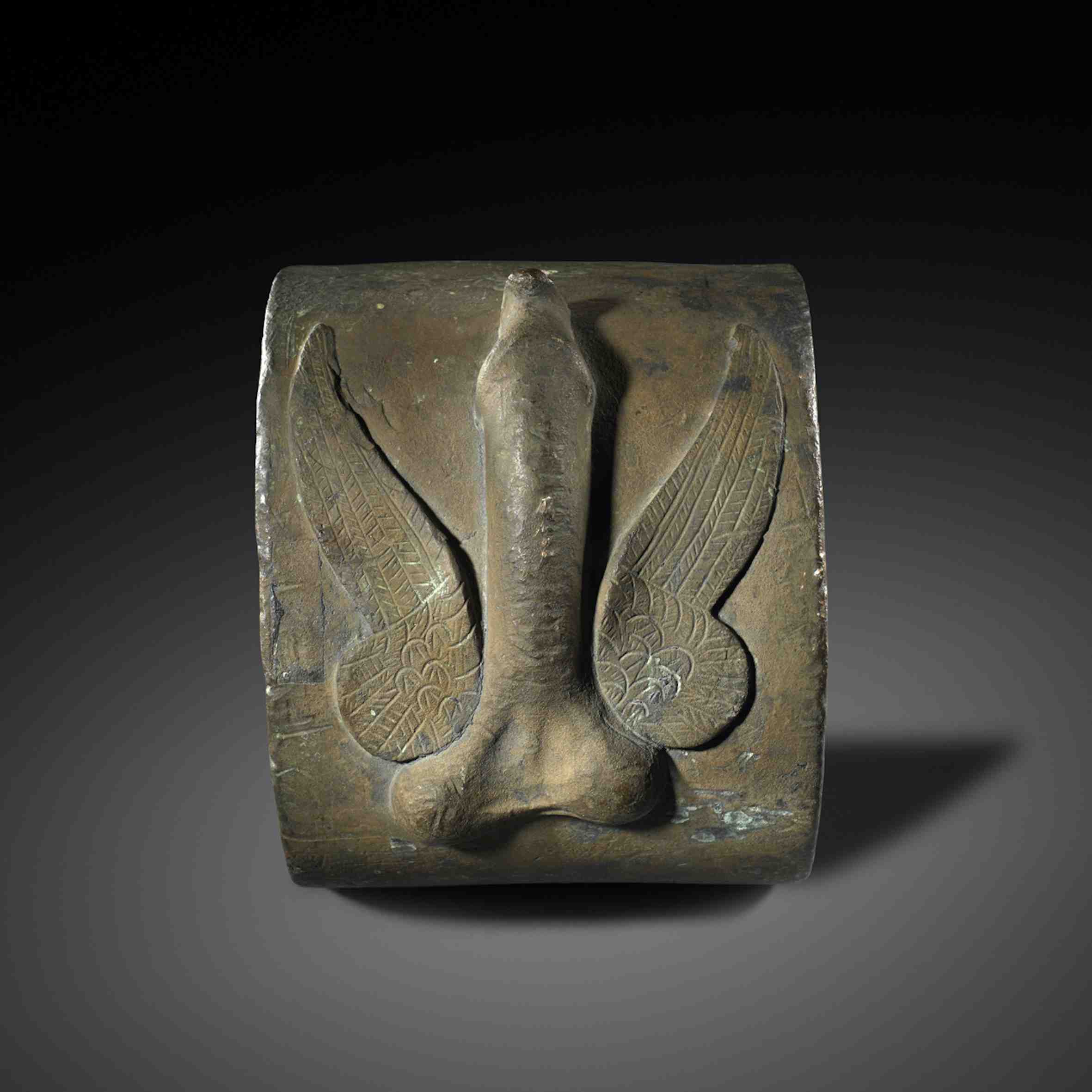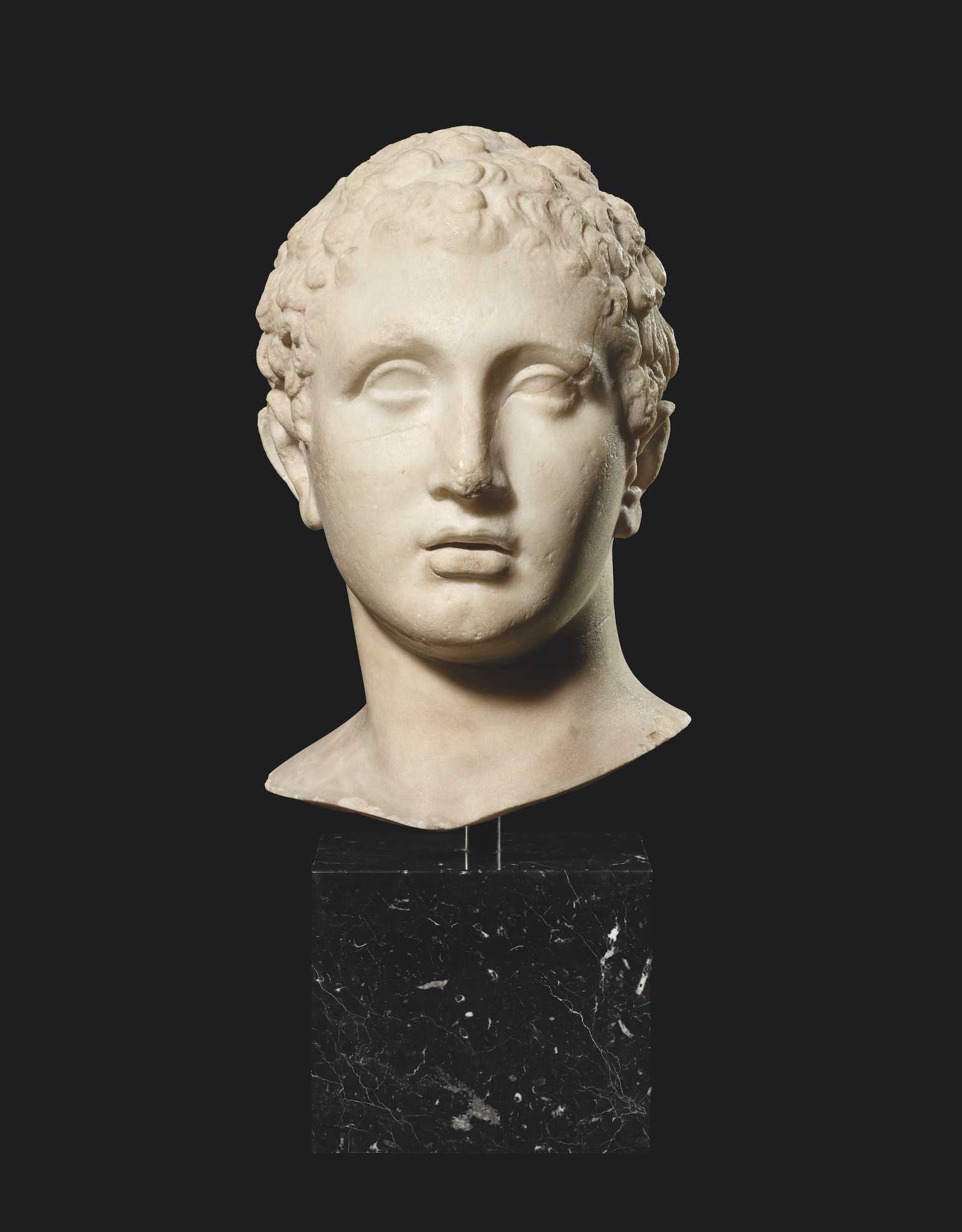Side A: In Six’s technique initially with applied paint; to the left stands a winged goddess, to the right a bearded man facing the god Hermes. The man, dressed in a himation, the end of which is draped over his left arm, his left hand holding a knobbed staff, raises his right hand as if to greet Hermes. The himation-clad Hermes, wearing a petasos, and holding his lowered kerykeion, has his hand raised as if talking. The goddess stands facing the onlooker, wings outstretched, and head turned to the right; she has her left hand raised behind the man’s back as if signally to Hermes. Her pleated chiton trimmed at the neck and arms with a decorative border, the richly decorated hems have zigzag patterns.
Side B: Three standing figures; a winged goddess and two men. The bearded men stand with their heads looking towards each other and their bodies facing the onlooker. The central figure has his left hand raised, the winged goddess stands to his side, holding his wrist as if to guide him away.
This calyx-krater is a highly significant work in the oeuvre of Etruscan vases, with exceptionally high-quality drawing. It is the only known calyx-crater which can be attributed the Praxias group.
Note
This calyx-crater is very close to a group of four column craters and four stamnoi that Clelia Lavosia explores in Bollettino d’Arte 43, 1958, 293ff. ; 45, 1960, 297ff.
These eight vessels form a subdivision of the Praxias group; Beazley identifies these 5th-century Etruscan vases painted in the “Six” technique after the Amphora Cabinet des Médailles 913 signed by the master Praxias (Etruscan Vase Painting,1947, p. 196, no. 12). For the Praxias group cf. also B.B. Shefton, The Greek Vase, Wiss. Zeitschrift. The Univ. Rostock, 16, 1967, 529ff. The vases analysed by Lavosia differ from the actual, older, Praxias group, in that they have excellent style and technical features: their images are first scratched, and then painted, with the clay colour covering the incised lines in places, which – in imitation of red-figure vases – should appear as black outlines. This crater confirms the order of the technical processes observed by Laviosa, but here the contour is not scratched everywhere, the drawing is a draft full of corrections. Laviosa ascribes her vessels to the same Vulcent workshop; made between 470 and 420 B.C. This calyx-crater reflects the style of the later works, such as the stamnos from the Vagnonville group in Florence (Beazley, op. 197, 42), the only one on which the eyes of all figures are shown in profile view.
The late dating of this crater is also supported by its slim shape, which mimics the Attic calyx craters of the early classical period. The attribution to a master hand is difficult because, as Laviosa notes, the Attic examples from this group are too strong to identify one or more individual artistic traits with certainty. This calyx-crater stands alone in its subject matter; a winged goddess appears on both sides behind the central mortal figure. The goddess on side A is not seen by the man, only obvious to Hermes. On side B, the divinity gently takes the man’s arm to lead him away from the companion, to whom he is talking. The deity can be identified as the Etruscan goddess of death Vanth, the companion of Charon, known from other depictions, including the mural of the Tomba François, JdI Supplement 12, 1930, fig. 85 and plate 28. In this image, the goddess approaches an old man at the very moment when he receives a vision of Hermes Psychopompos, the conveyor of souls. Etruscan and Greek symbolism are fused into a classical conception of death, which in its way is on a par with the images found on Attic white-ground lekythoi.









